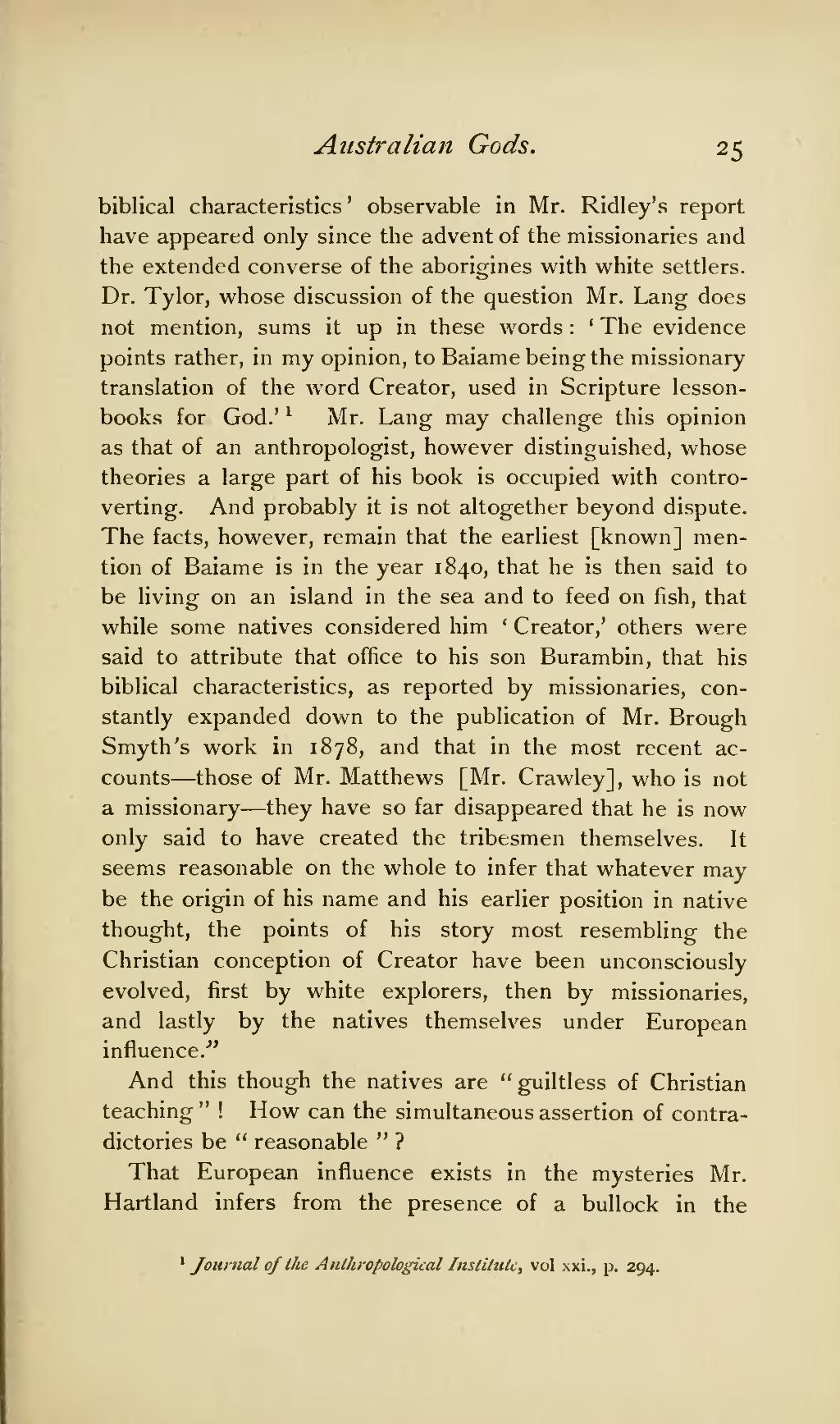biblical characteristics' observable in Mr. Ridley's report have appeared only since the advent of the missionaries and the extended converse of the aborigines with white settlers. Dr. Tylor, whose discussion of the question Mr. Lang does not mention, sums it up in these words: 'The evidence points rather, in my opinion, to Baiame being the missionary translation of the word Creator, used in Scripture lesson-books for God.'[1] Mr. Lang may challenge this opinion as that of an anthropologist, however distinguished, whose theories a large part of his book is occupied with controverting. And probably it is not altogether beyond dispute. The facts, however, remain that the earliest [known] mention of Baiame is in the year 1840, that he is then said to be living on an island in the sea and to feed on fish, that while some natives considered him 'Creator,' others were said to attribute that office to his son Burambin, that his biblical characteristics, as reported by missionaries, constantly expanded down to the publication of Mr. Brough Smyth's work in 1878, and that in the most recent accounts—those of Mr. Matthews [Mr. Crawley], who is not a missionary—they have so far disappeared that he is now only said to have created the tribesmen themselves. It seems reasonable on the whole to infer that whatever may be the origin of his name and his earlier position in native thought, the points of his story most resembling the Christian conception of Creator have been unconsciously evolved, first by white explorers, then by missionaries, and lastly by the natives themselves under European influence."
And this though the natives are "guiltless of Christian teaching"! How can the simultaneous assertion of contradictories be "reasonable"?
That European influence exists in the mysteries Mr. Hartland infers from the presence of a bullock in the
- ↑ Journal of the Anthropological Institute, vol xxi., p. 294.
